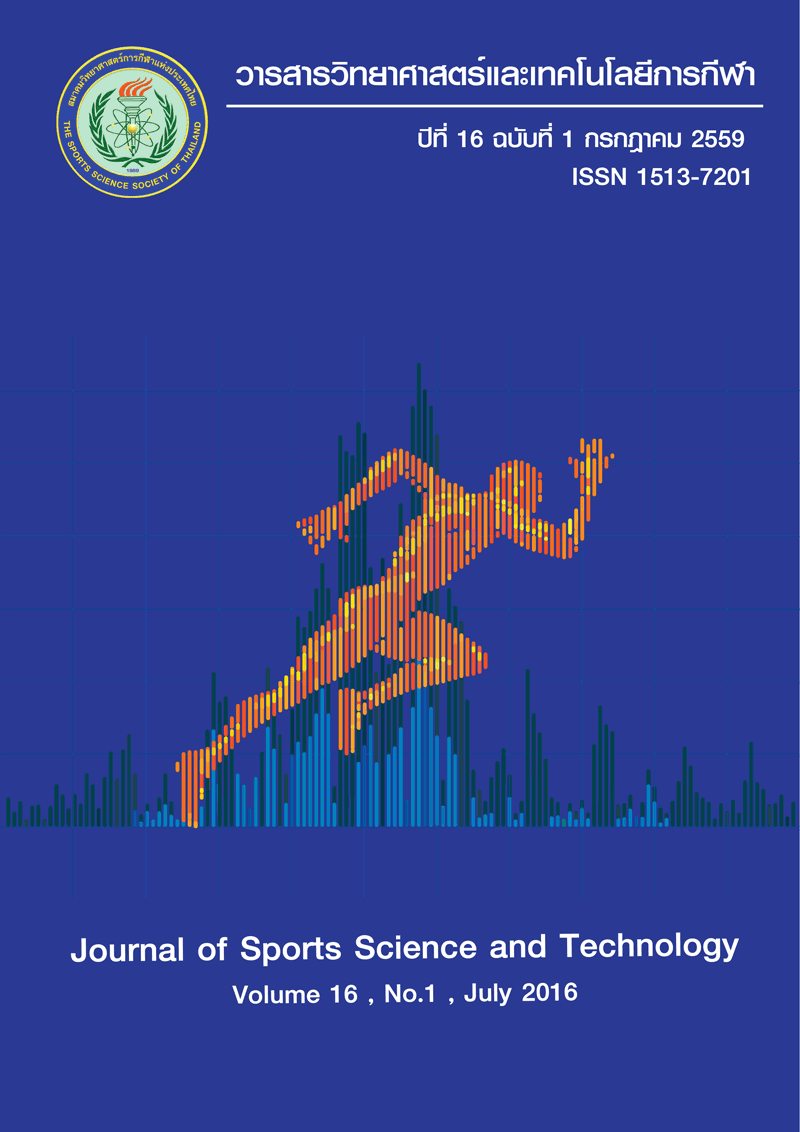Acute Effects of Combination Steam Bath in Cloth Tent with Dynamic Stretching on Physiological Responses and Physical Fitness
บทคัดย่อ
The aim of this study was to examine and compare the acute effects of different warm-up activitieson the physiological responsiveness and physical fitness. The test subjects consisted of a simple random
sampling. The protocol was a cross-over selection of 18 male representatives comprising futsal players from
the Faculty of Sports Science, Kasetsart University. The mean age of the participants was 21.44 ± 0.62 years.
They performed 2 different warm-up protocols as follows: 1. a combination of jogging on a treadmill at speed
between 2, 4 and 6 km h-1(each 4 - minutes) for 12 minutes, followed by dynamic stretching (TM + DS) 2. a
combination of a 15-minute steam bath followed by dynamic stretching (SB + DS). The trials commenced
after a washout period of 1 week. The body temperature and heart rate of all test subjects, as well as their
flexibility and vertical jump height, were recorded pre and post intervention. Data were statistically analyzed
using a dependent t-test. The statistical significance level was set at p < 0.05.
The results showed that the body temperature, heart rate, flexibility and vertical jump height were
increased significantly (p < 0.05) after warm-up of both protocols. Except, the body temperature of pre and
post of TM+DS protocol was no significantly difference (p = 0.077). In addition, there were no significantly
differences after warm-up between both protocols. In conclusion, the acute effects of both warm-up protocols
can improve physiological response and physical fitness.
(Journal of Sports Science and Technology 2016; 16(1) : 45-54 )
Keywords: Steam bath, Muscle stretching, Physical fitness, Exercise physiology
*Corresponding author: Tassanee Paraput
Department of Sports Science and Health, Faculth of Sports Science,
Kasetsart University1 Kamphaeng Saen, Nakhon Pathom, Thailand 73140
E-mail: tuss.pa2@gmail.com
เผยแพร่แล้ว
2016-07-26
รูปแบบการอ้างอิง
1.
Paraput T, RUANGTHAI R, PHIMPHAPHORN P. Acute Effects of Combination Steam Bath in Cloth Tent with Dynamic Stretching on Physiological Responses and Physical Fitness. J Sports Sci Technol [อินเทอร์เน็ต]. 26 กรกฎาคม 2016 [อ้างถึง 12 ธันวาคม 2025];16(1):45-54. available at: https://he01.tci-thaijo.org/index.php/JSST/article/view/55360
ฉบับ
ประเภทบทความ
Sports and Exercise Physiology






